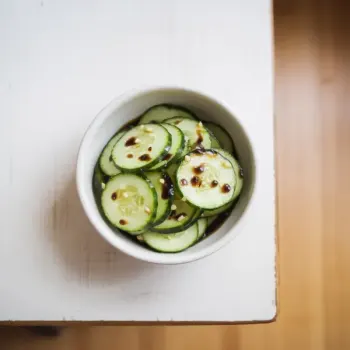
 35 minutes
35 minutesA vibrant blend of Mediterranean flavors featuring mussels, fennel, and couscous with citrus notes.


teaspoons
Israeli Couscous
cups
Garlic Clove, smashed and peeled
each
Fennel Bulb, stalks trimmed, bulb halved, cored, cut into ¼-inch slices
0 lb
teaspoons
Mussels, scrubbed and debearded
0 lb
Finocchiona, casings cut away, halved lengthwise, and cut into ¼-inch half-moon slices
0 lb
Dry, Unoaked White Wine
cups
Flat-leaf Parsley Leaves, lightly packed
cups
Finely Grated Orange Zest
teaspoons
Fresh Orange Juice
cups
tablespoons
1. Cook the Couscous
Start by bringing a medium saucepan of salted water to a boil. Add the Israeli couscous and cook until it is just barely al dente, about one minute shy of the package directions. Drain the couscous and toss it with a drizzle of extra-virgin olive oil to prevent sticking.
2. Infuse the Olive Oil
While the couscous is cooking, heat ¼ cup of olive oil in a large skillet or Dutch oven over medium heat. Add the smashed garlic cloves and cook them slowly until they turn a rich golden color, about 5 minutes. This step is crucial as it infuses the oil with a deep, aromatic flavor without burning the garlic. Remove the garlic and set it aside.
3. Cook the Fennel
Next, add the sliced fennel to the same skillet, season it with ½ teaspoon of salt, and cook until it becomes tender and slightly caramelized, which should take about 12 to 15 minutes. The fennel should soften and develop a sweet, fragrant quality that pairs beautifully with the mussels.
4. Cook the Mussels
Increase the heat to high and add the dried chile flakes, scrubbed mussels, finocchiona slices, and the reserved garlic to the skillet. Pour in the white wine, cover the skillet, and cook until the mussels open up, shaking the pan occasionally to ensure even cooking. This should take about 5 minutes. If any mussels remain closed after this time, discard them.
5. Finish the Dish
Reduce the heat to low and add the parsley leaves, orange zest, fresh orange juice, and unsalted butter to the skillet. Fold in the cooked couscous, cover the skillet, and let it warm through for a minute or two. The combination of fresh citrus, buttery texture, and herbal notes from the parsley will elevate the dish.
6. Serve
Finally, fluff the couscous gently and distribute it evenly among serving bowls. Drizzle with a bit more extra-virgin olive oil for a finishing touch, and serve immediately. Enjoy!
Replace couscous with rice, add saffron and paprika to the aromatic base, and use chorizo as an additional protein.
Swap mussels for shrimp, use quinoa in place of couscous, and include herbes de Provence in the aromatic base.
Use clams instead of mussels, add chunks of chorizo for smokiness, and mix in diced tomatoes with the couscous.
Ensure to buy fresh, live mussels that smell like the ocean. If any mussels are open, tap them lightly; if they don't close, discard them.
Steam mussels in a covered pot with a small amount of liquid until they open, indicating they're cooked.
Rinse under cold water, scrub off debris, and remove the 'beards' by pulling towards the hinge.
Mussels are best enjoyed straight from the pot and can become rubbery if overcooked.
Ensure the right liquid to couscous ratio, usually 1:1. Remove from heat, cover, and let it steam. Fluff gently before serving.




Comments (0)